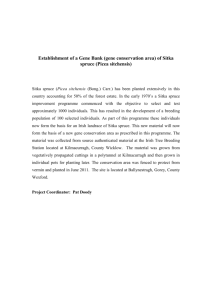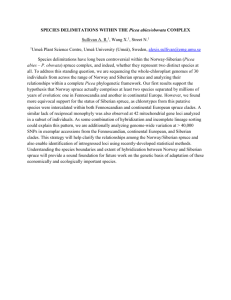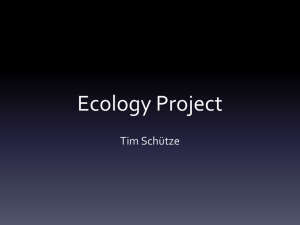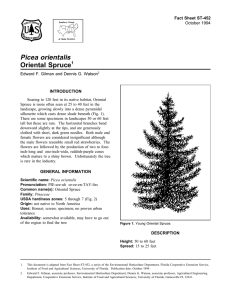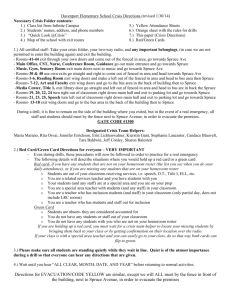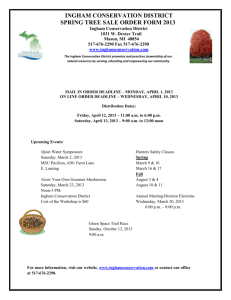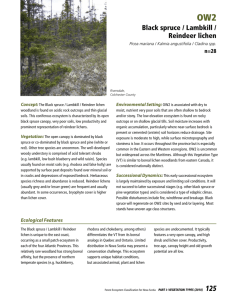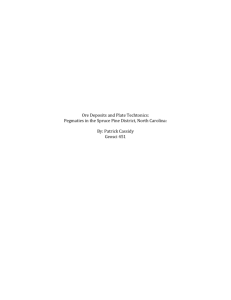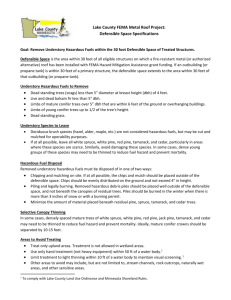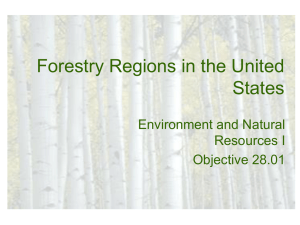Evergreens - China King
advertisement
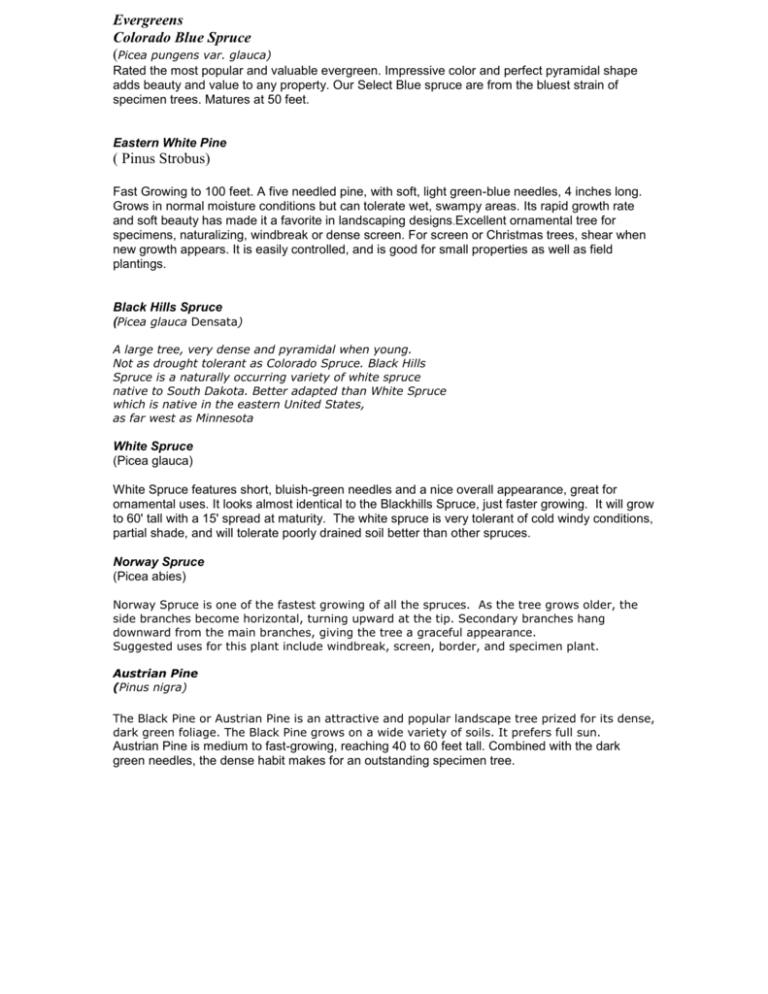
Evergreens Colorado Blue Spruce (Picea pungens var. glauca) Rated the most popular and valuable evergreen. Impressive color and perfect pyramidal shape adds beauty and value to any property. Our Select Blue spruce are from the bluest strain of specimen trees. Matures at 50 feet. Eastern White Pine ( Pinus Strobus) Fast Growing to 100 feet. A five needled pine, with soft, light green-blue needles, 4 inches long. Grows in normal moisture conditions but can tolerate wet, swampy areas. Its rapid growth rate and soft beauty has made it a favorite in landscaping designs .Excellent ornamental tree for specimens, naturalizing, windbreak or dense screen. For screen or Christmas trees, shear when new growth appears. It is easily controlled, and is good for small properties as well as field plantings. Black Hills Spruce (Picea glauca Densata) A large tree, very dense and pyramidal when young. Not as drought tolerant as Colorado Spruce. Black Hills Spruce is a naturally occurring variety of white spruce native to South Dakota. Better adapted than White Spruce which is native in the eastern United States, as far west as Minnesota White Spruce (Picea glauca) White Spruce features short, bluish-green needles and a nice overall appearance, great for ornamental uses. It looks almost identical to the Blackhills Spruce, just faster growing. It will grow to 60' tall with a 15' spread at maturity. The white spruce is very tolerant of cold windy conditions, partial shade, and will tolerate poorly drained soil better than other spruces. Norway Spruce (Picea abies) Norway Spruce is one of the fastest growing of all the spruces. As the tree grows older, the side branches become horizontal, turning upward at the tip. Secondary branches hang downward from the main branches, giving the tree a graceful appearance. Suggested uses for this plant include windbreak, screen, border, and specimen plant. Austrian Pine (Pinus nigra) The Black Pine or Austrian Pine is an attractive and popular landscape tree prized for its dense, dark green foliage. The Black Pine grows on a wide variety of soils. It prefers full sun. Austrian Pine is medium to fast-growing, reaching 40 to 60 feet tall. Combined with the dark green needles, the dense habit makes for an outstanding specimen tree. Concolor Fir (Abies concolor) Slow- to moderate-growing. The white fir is known as the most beautiful of the firs. It is also more adaptable than other species such as balsam fir. Its elegant, symmetrical form with lowweeping branches makes it a good specimen tree. Needles are 1.5-2.5 inches long and vary in color from green to rich blue. Height: 35-40 feet Spread: 15-30 feet. Douglas Fir (Pseudotsuga menziesii) Douglas-fir is a large to very large evergreen tree with narrow pointed crown of slightly drooping branches; at maturity it reaches a height of 80–200 ft (24–60 m) and a trunk diameter of 2–5 ft (0.6–1.5 m). The bark is dark or reddish brown, very thick, deeply furrowed, and often corky. The needlelike leaves spreading mostly in two rows are flat, and flexible, with a very short leafstalk. Buds are distinctive, conical pointed, scaly, and dark red. The cones are elliptical and light brown, with many thin rounded cone-scales, each above a longer distinctive three-pointed bract. Canadian Hemlock (Tsuga Canadensis) This handsome and graceful evergreen hedge is ideal for screening, groupings, and foundation plantings. It has medium- to dark-green needles are about 0.5" long. The small evergreen needles and thin wispy horizontal stems that turn down at the ends combine to yield a very fine-textured and gracefully branching pyramidal tree, that can be sheared for improved density. The Canadian hemlock may be sheared to any height or shape and likes full sun to light shade. Doesn't care for heavy clay soils and instead likes acidic, loamy, moist, sandy, well drained soils. If left natural, it can grow up to 40' — 70'. For a hedge effect, plant about 2' apart (zones 3 — 8) Emerald Arborvitae Thuja plicata In cultivation, it can be effectively used as a hedge or screen. Foliage is glossy, green and scale-like and is aromatic. The bark is reddish brown and sheds. Foliage may turn brownish bronze in winter. Can be grown close to buildings and in open spaces, it can be an excellent skyline tree. grows to a height of 15 - 20 feet, with a spread of 3 - 4 feet. This arborvitae is very compact and tight, at 13' tall they are only 3' wide. . Green Giant Arborvitae Thuja plicata 'Green Giant' The 'Green Giant' arborvitae is a large, vigorous, fast growing evergreen. It's natural pyramidal to conical form boasts dense, rich green foliage that darkens or bronzes only a little in the winter. This is an exceptional landscape tree for use as a screen, hedge, windbreak, or single specimen. It is tolerant of a wide variety of soils, but prefers moist, well drained soil, sun to partial shade. It is wind resistant once established and withstands heavy ice or snow loads. Under good growing conditions, it can grow up to 3' a year to a height of 50'-60' with a 12'-20' spread. Plant 5'-6' apart for very fast screen, otherwise 10'-15' a part. Zones 5-7.

